Education | Timeline |
- 1829
- 1834
- 1840s
- 1848
- 1853
- 1859
- 1870
- 1870s
- 1871
- 1875
- 1877
- 1879
- 1880s
- 1882
- 1883
- 1884
- 1886
- 1887
- 1889
- 1890s
- 1891
- 1892
- 1893
- 1894
- 1895
- 1898
- 1899
- 1900
- 1900s
- 1901
- 1902
- 1904
- 1905
- 1906
- 1908
- 1909
- 1910
- 1910s
- 1911
- 1912
- 1913
- 1914
- 1915
- 1916
- 1917
- 1918
- 1919
- 1920
- 1920s
- 1921
- 1922
- 1923
- 1924
- 1925
- 1926
- 1927
- 1928
- 1929
- 1930s
- 1930
- 1931
- 1933
- 1934
- 1935
- 1936
- 1937
- 1938
- 1939
- 1940s
- 1940
- 1941
- 1942
- 1943
- 1944
- 1945
- 1946
- 1947
- 1948
- 1949
- 1950s
- 1950
- 1951
- 1952
- 1953
- 1954
- 1955
- 1956
- 1957
- 1958
- 1959
- 1960s
- 1960
- 1961
- 1962
- 1963
- 1964
- 1965
- 1966
- 1967
- 1968
- 1969
- 1970s
- 1970
- 1971
- 1972
- 1973
- 1974
- 1976
- 1979
- 1980
- 1992
Art Deco District, Miami Beach
The Art Deco District in Miami Beach, Florida is the largest concentration of 1920s and 1930s resort architecture in the United States. Developers design, build and promote the area as the "tropical playground" for the nascent middleclass vacationer able to freely travel the country by automobile and train. The area, bounded by the Atlantic Ocean, 6th Street, Alton Road, Dade Boulevard and 23rd Street, is a mix of Mediterranean Revival, Art Deco, and International/Moderne-styles. The vibrantly colored and often architecturally fantastical buildings are divided into three use types: seasonal hotels, retail, and 80 square blocks of residential property. The district is recognized in 1979 as an important site of 20th century architecture, primarily Art Deco, by the National Register of Historic Places.




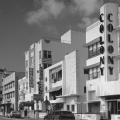
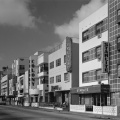
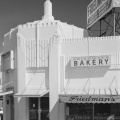
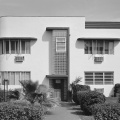
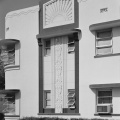
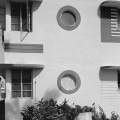


Decade at a Glance
The population of America is 106,521,537 with an increased average life expectancy of 54 years.
The Volstead Act becomes law in 1919 making the sale of an intoxicating "beverage" with more than 0.5% of alcohol illegal. The inability of government to enforce the Constitutional amendment creating Prohibition encourages open violation of the national law by large segments of the population.
Women vote for the first time in a national election.
The national unemployment rate is 5.2% with a worker's pay averaging $1236 per year. Teachers' salaries are approximately $970 nationally. The illiteracy rate is low—6% of the total population.
The improved standard of living means Americans can buy more—often on credit or by installment payments.
Traveling across country is faster on 387,000 miles of paved roads. It takes 13 days to reach California from New York by automobile. Travel by airplane begins. Travelers can take regularly scheduled coast-to-coast flights.
The New York Stock Exchange crashes in October 1929.
Central Avenue, Los Angeles
During the late 1800s and early 20th century, African Americans begin migrating to Los Angeles. In 1880 only 102 African Americans live in the city, but by 1900 (U.S. Census) the city ranks fourteenth in its African American population. These early settlers congregate along Central Avenue and the area becomes a flourishing religious, social and economic hub for the community. Many of Paul R. Williams' earliest projects are located in this area of Los Angeles.
The leading African American businesses including mortuaries, ice cream shops, cafes, and newspapers all locate on or near Central Avenue. In 1928 the famous Dunbar Hotel, originally called the Hotel Sommerville, opens at 4225 S. Central. Over 5,000 people attend the grand opening. As the only hotel in Los Angeles catering to African Americans, it is a fashionable place to stay. This hotel is the site of the first NAACP national convention held in the west.
For many years Central Avenue remains an integral part of African American life in Los Angeles. It is said "you could stand on the corner of Vernon and Central and see everybody you knew... if you stood there long enough." (Los Angeles Sentinal, April 14, 1983)